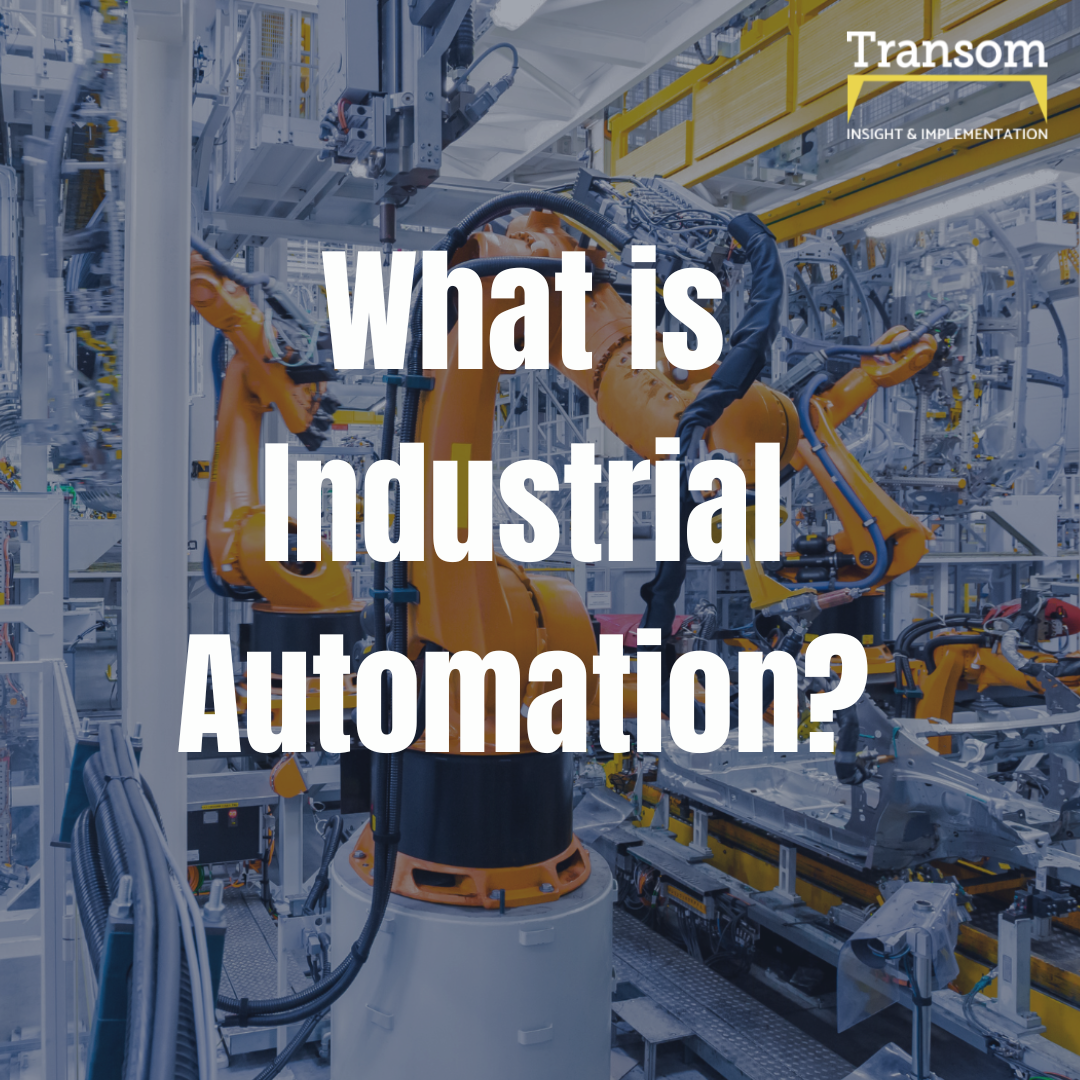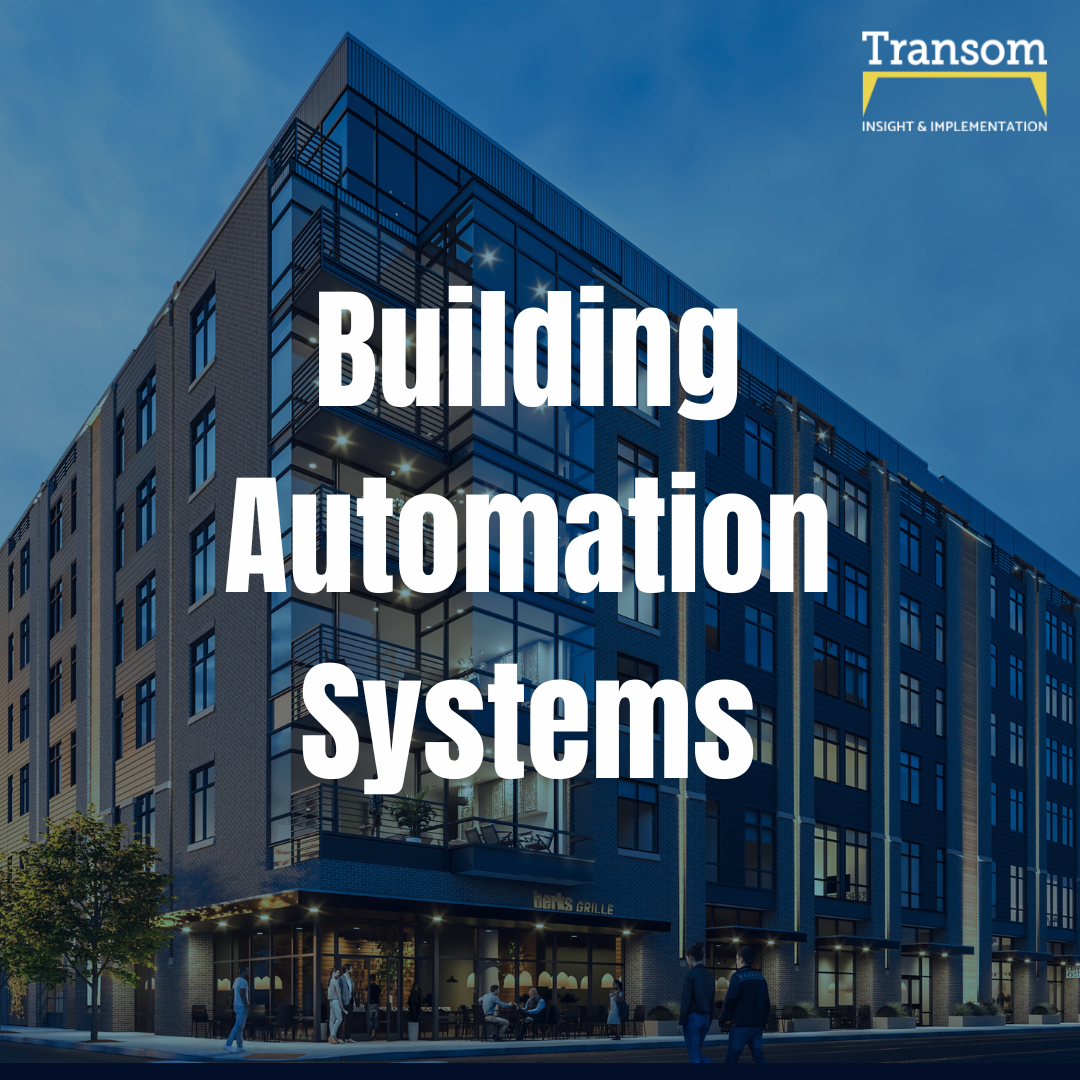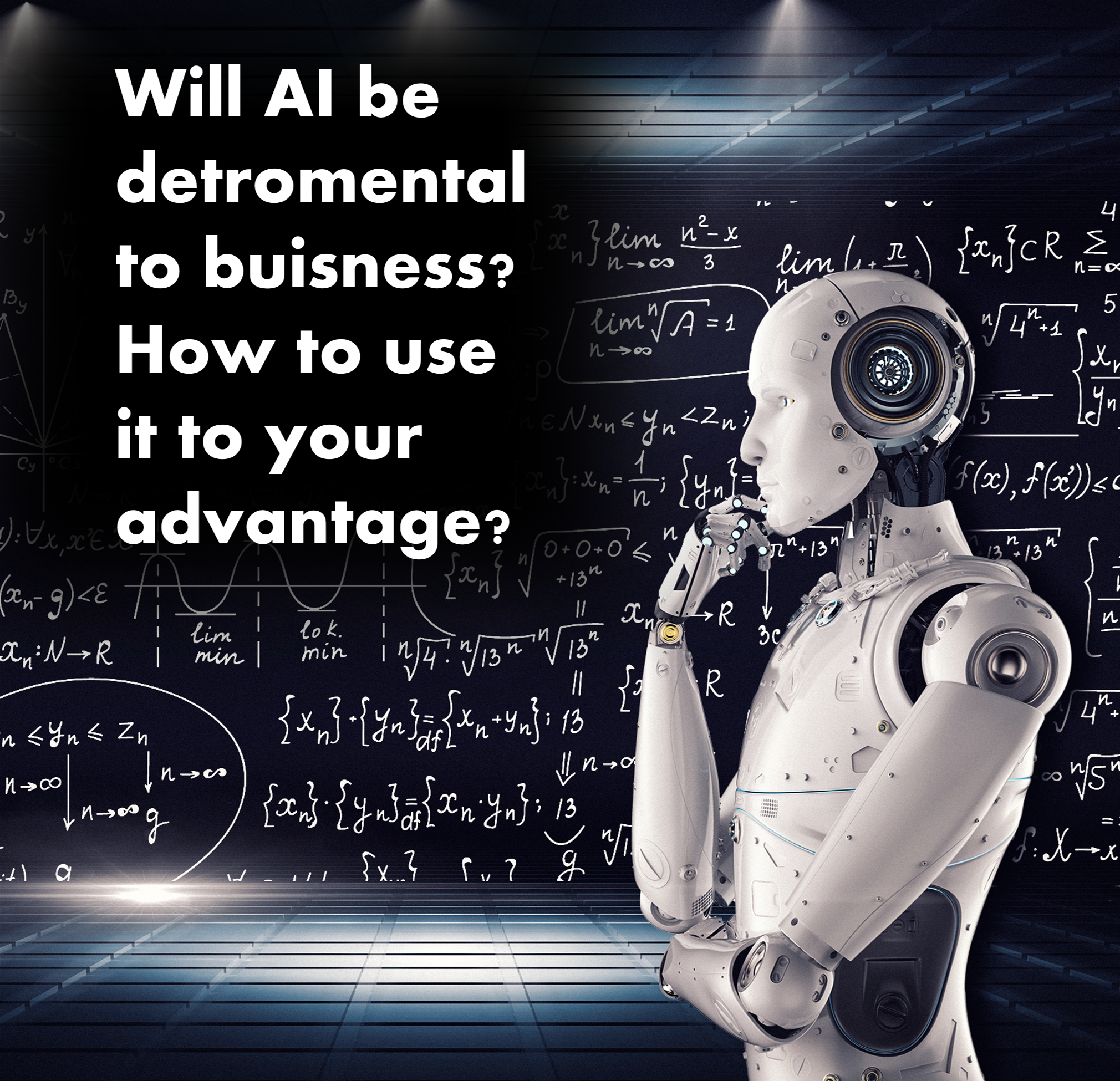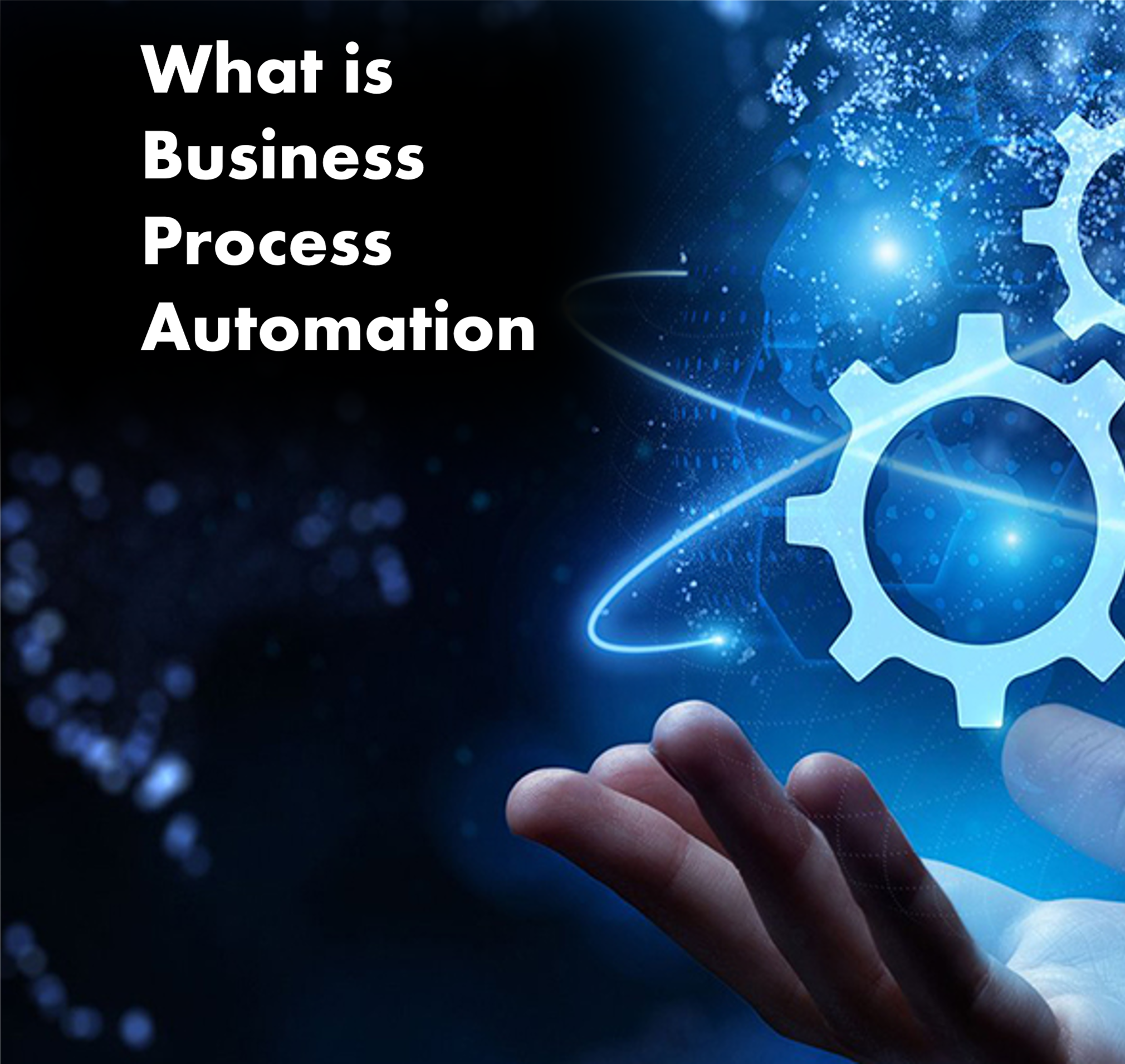[rmp_menu id=”10519″] NUESTRO TRABAJO INDUSTRIAS Automotriz Manufactura Edificios Inteligentes Data Centers SOLUCIONES Acualizaciones de Ingeniería y IIoT Optimizacion de Operaciones Inteligente Servicios Gestionados para BMS, DCIM, y EMS Energía y Sustentabilidad ICONICS SERVICIOS COMPAÑÍA Sobre Nosotros Blog CARRERAS CONTACTO Diferencias entre BMS, EMS y DCIM: Introducción En el ámbito de la automatización, existen diferentes sistemas que desempeñan un papel fundamental en la gestión y control de instalaciones y equipos. Entre ellos se encuentran el BMS (Building Management System), el EMS (Energy Management System) y el DCIM (Data Center Infrastructure Management). En este artículo, exploraremos las diferencias entre estos sistemas y su aplicación en el campo de la automatización. ¿Qué es un BMS? Un BMS, o Sistema de Gestión de Edificios, es un sistema de automatización que controla y supervisa diversos aspectos relacionados con el funcionamiento de un edificio. Esto incluye sistemas de climatización, iluminación, seguridad, control de acceso, gestión de energía, entre otros. El BMS se encarga de recopilar datos y tomar decisiones basadas en ellos para optimizar la eficiencia y el confort del edificio. ¿Qué es un EMS? Un EMS, o Sistema de Gestión Energética, se enfoca específicamente en el monitoreo y control del consumo de energía de un edificio o una instalación. Su objetivo principal es optimizar el uso de la energía, identificando patrones de consumo, realizando ajustes en tiempo real y generando informes para la toma de decisiones informadas sobre eficiencia energética. ¿Qué es un DCIM? Un DCIM, o Sistema de Gestión de la Infraestructura del Centro de Datos, está diseñado para la automatización y control de las operaciones en un centro de datos. Este sistema supervisa y gestiona todos los componentes y recursos críticos de un centro de datos, como servidores, sistemas de enfriamiento, distribución de energía, cableado, entre otros. Su objetivo principal es maximizar la disponibilidad, eficiencia y rendimiento del centro de datos. Diferencias entre BMS, EMS y DCIM El BMS se enfoca en la gestión integral de un edificio, abarcando aspectos como climatización, iluminación, seguridad, entre otros. El EMS se centra exclusivamente en la gestión energética, monitoreando y controlando el consumo de energía para optimizar la eficiencia. El DCIM está diseñado específicamente para la gestión de un centro de datos, supervisando y controlando todos los componentes críticos para garantizar su funcionamiento óptimo. Aplicaciones y beneficios de cada sistema El BMS es ampliamente utilizado en edificios comerciales, instituciones, hospitales, hoteles y otros entornos similares. Sus beneficios incluyen un control centralizado, reducción de costos operativos, mejora en la eficiencia energética y aumento del confort y la seguridad del edificio. El EMS es aplicable en cualquier tipo de edificio o instalación que desee controlar y optimizar su consumo de energía. Sus beneficios incluyen la identificación de oportunidades de ahorro energético, la reducción de costos, la supervisión en tiempo real y la generación de informes sobre el rendimiento energético. El DCIM es esencial en los centros de datos, donde se requiere un control minucioso de la infraestructura crítica. Sus beneficios incluyen una mayor disponibilidad del centro de datos, una mayor eficiencia energética, una mejor gestión de la capacidad y la planificación, y una respuesta más rápida ante problemas y fallas. Integración de sistemas para una automatización eficiente Si bien los sistemas BMS, EMS y DCIM tienen enfoques diferentes, en algunos casos se pueden integrar para lograr una automatización más eficiente y completa. Por ejemplo, en un edificio que alberga un centro de datos, se puede integrar un BMS para controlar la climatización y la iluminación en el área del centro de datos, mientras que el DCIM se encarga de la gestión específica de la infraestructura del centro de datos. Conclusión Los sistemas BMS, EMS y DCIM desempeñan roles importantes en la automatización de edificios, la gestión energética y la administración de centros de datos, respectivamente. Cada uno tiene su propio enfoque y beneficios específicos, pero en algunos casos se pueden integrar para lograr una automatización más completa y eficiente. Al aprovechar estos sistemas, las empresas pueden optimizar su eficiencia operativa, reducir costos y mejorar la sostenibilidad en sus instalaciones. Preguntas frecuentes 1. ¿Cuál es la diferencia entre un BMS y un EMS? La diferencia principal radica en su enfoque y alcance. El BMS se centra en la gestión integral de un edificio, mientras que el EMS se enfoca exclusivamente en la gestión energética. 2. ¿Cuál es la aplicación del DCIM? El DCIM se aplica principalmente en centros de datos, donde se encarga de supervisar y controlar todos los componentes y recursos críticos del centro de datos para garantizar su funcionamiento óptimo. 3. ¿Se pueden integrar estos sistemas? Sí, en algunos casos se pueden integrar sistemas BMS, EMS y DCIM para lograr una automatización más eficiente y completa en instalaciones que requieren un control multifacético y una gestión integral. Learn more at https://transom.com.mx/ Facebook Twitter Youtube PLC’s: Qué son y cómo funcionan – Ingenieros de control y automatización PLC’s: Qué son y cómo funcionan – Ingenieros de control y automatización What is Industrial Automation? And How Can It Help Your Business? What is Industrial Automation? And How Can It Help Your Business? Growing Into a Leadership Role within Industrial Automation Growing Into a Leadership Role within Industrial Automation Transom Transom is an industry 4.0 company that provides specialized integration services in monitoring, data acquisition, and visualization & management of BMS, DCIM, and EMS systems, with +25 years of experience with top-tier companies. Industries Automotive Manufacturing Data Centers Smart Buildings Solutions Engineering & IIOT Upgrades Smart Operations Optimization Managed Services for BMS, DCIM & EMS Energy & Sustainability Company Home Careers About us Contact Connect with us +52 (444) 546-5483 [email protected] Facebook-logo Linkedin-in Youtube (c) 2023 A Group Company of Grupo Transforma / All rights reserved Terms and Conditions Privacy Policy Lorem ipsum dolor sit amet, consectetur adipiscing elit. Ut elit tellus, luctus nec ullamcorper mattis, pulvinar dapibus leo.
PLC’s: Qué son y cómo funcionan – Ingenieros de control y automatización
[rmp_menu id=”10519″] NUESTRO TRABAJO INDUSTRIAS Automotriz Manufactura Edificios Inteligentes Data Centers SOLUCIONES Acualizaciones de Ingeniería y IIoT Optimizacion de Operaciones Inteligente Servicios Gestionados para BMS, DCIM, y EMS Energía y Sustentabilidad ICONICS SERVICIOS COMPAÑÍA Sobre Nosotros Blog CARRERAS CONTACTO PLC’s: Qué son y cómo funcionan – Ingenieros de control y automatización Los ingenieros de control y automatización desempeñan un papel fundamental en el diseño y desarrollo de sistemas de automatización industrial. Una de las herramientas esenciales en su trabajo son los controladores lógicos programables, también conocidos como PLC’s (por sus siglas en inglés: Programmable Logic Controllers). En este artículo, exploraremos en detalle qué son los PLC’s y cómo funcionan, destacando su importancia en el ámbito de la ingeniería de control y automatización. ¿Qué es un PLC? Un PLC es un dispositivo electrónico programable utilizado en sistemas de control y automatización industrial. Es capaz de realizar diferentes tareas lógicas, secuenciales y de temporización, permitiendo controlar y monitorear diversos procesos en una planta de producción. Los PLC’s han reemplazado en gran medida a los sistemas de control basados en relés y temporizadores, ofreciendo mayor flexibilidad y capacidad de programación. Componentes básicos de un PLC Un PLC consta de varios componentes esenciales que trabajan en conjunto para su funcionamiento. Algunos de los componentes básicos son: a. Unidad central de procesamiento (CPU) La CPU es el “cerebro” del PLC y se encarga de ejecutar los programas y realizar las operaciones lógicas. Controla todas las entradas y salidas del sistema y procesa la información en tiempo real. b. Módulos de entrada y salida Estos módulos se conectan a sensores y actuadores del sistema. Las entradas capturan las señales provenientes de los sensores, mientras que las salidas envían señales a los actuadores para controlar diferentes dispositivos en el proceso. c. Fuente de alimentación Proporciona la energía eléctrica necesaria para el funcionamiento del PLC d. Memoria El PLC cuenta con una memoria para almacenar el programa de control, datos y parámetros necesarios para su operación. Funcionamiento de un PLC El funcionamiento de un PLC se basa en un ciclo de escaneo continuo. A grandes rasgos, este ciclo se compone de las siguientes etapas: Lectura de entradas: El PLC lee las señales de entrada provenientes de los sensores y las almacena temporalmente en memoria. Ejecución del programa: La CPU ejecuta el programa de control almacenado en la memoria, realizando las operaciones lógicas y secuenciales necesarias. Actualización de salidas: Una vez que se han procesado las entradas según el programa, el PLC actualiza las señales de salida enviadas a los actuadores. Repetición del ciclo: El ciclo de escaneo se repite continuamente, asegurando un control y monitoreo constantes de los procesos. Programación de PLC’s La programación de los PLC’s se realiza utilizando lenguajes específicos, como el lenguaje de programación en escalera (Ladder), el lenguaje de instrucciones de función (Function Block) o el lenguaje de texto estructurado (Structured Text). Estos lenguajes permiten definir la lógica y las secuencias de control de manera intuitiva. Ventajas de utilizar PLC El uso de PLC’s ofrece numerosas ventajas en comparación con los sistemas de control convencionales. Algunas de las ventajas más destacadas son: Flexibilidad: Los PLC’s permiten modificar y reprogramar fácilmente las secuencias de control según los requerimientos del proceso. Modularidad: Es posible añadir o quitar módulos de entrada y salida según las necesidades del sistema, lo que facilita la expansión o modificación del control. Diagnóstico y mantenimiento Los PLC’s cuentan con herramientas de diagnóstico incorporadas que facilitan la detección y solución de problemas. Además, su mantenimiento es más sencillo que en los sistemas basados en relés. Comunicación Los PLC’s pueden comunicarse con otros dispositivos y sistemas, permitiendo una integración eficiente en la infraestructura de control de la planta. Aplicaciones de los PLC’s en la industria Automatización de procesos de fabricación. Control de maquinaria industrial. Sistemas de control de edificios. Control de sistemas de energía y distribución. Control de sistemas de transporte. Tendencias futuras en el uso de PLC’s El campo de la automatización industrial está en constante evolución, y los PLC’s siguen siendo una herramienta clave en el desarrollo de sistemas de control avanzados. Algunas de las tendencias futuras en el uso de PLC’s incluyen: Mayor integración con tecnologías de la Industria 4.0, como el Internet de las cosas (IoT) y el análisis de datos en tiempo real. Uso de PLC’s en sistemas de control distribuido, donde varios PLC’s colaboran para controlar un proceso complejo. Mayor capacidad de procesamiento y almacenamiento en los PLC’s, permitiendo implementar algoritmos más sofisticados. Importancia de los ingenieros de control y automatización En el ámbito de la ingeniería de control y automatización, los ingenieros desempeñan un papel fundamental en el diseño, implementación y mantenimiento de sistemas de automatización. Su experiencia en programación de PLC’s y conocimiento de los procesos industriales les permite optimizar la eficiencia, calidad y seguridad en la producción. Conclusión Los PLC’s son dispositivos fundamentales en la ingeniería de control y automatización. Su capacidad de programación, flexibilidad y aplicaciones en diversos sectores industriales los convierten en una herramienta indispensable para los ingenieros de control. A medida que la automatización industrial avanza, los PLC’s continuarán evolucionando y desempeñando un papel clave en el desarrollo de sistemas de control avanzados. Learn more at https://transom.com.mx/ Facebook Twitter Youtube Diferencias en BMS, EMS y DCIM: Diferencias en BMS, EMS y DCIM: PLC’s: Qué son y cómo funcionan – Ingenieros de control y automatización PLC’s: Qué son y cómo funcionan – Ingenieros de control y automatización What is Industrial Automation? And How Can It Help Your Business? What is Industrial Automation? And How Can It Help Your Business? Transom Transom is an industry 4.0 company that provides specialized integration services in monitoring, data acquisition, and visualization & management of BMS, DCIM, and EMS systems, with +25 years of experience with top-tier companies. Industries Automotive Manufacturing Data Centers Smart Buildings Solutions Engineering & IIOT Upgrades Smart Operations Optimization Managed Services for BMS, DCIM & EMS Energy & Sustainability Company Home Careers About us Contact Connect with us +52 (444) 546-5483 [email protected] Facebook-logo
What is Industrial Automation? And How Can It Help Your Business?
[rmp_menu id=”10519″] NUESTRO TRABAJO INDUSTRIAS Automotriz Manufactura Edificios Inteligentes Data Centers SOLUCIONES Acualizaciones de Ingeniería y IIoT Optimizacion de Operaciones Inteligente Servicios Gestionados para BMS, DCIM, y EMS Energía y Sustentabilidad ICONICS SERVICIOS COMPAÑÍA Sobre Nosotros Blog CARRERAS CONTACTO What is Industrial Automation? And How Can It Help Your Business? In today’s rapidly evolving business landscape, staying competitive and maximizing efficiency are crucial for the success of any organization. One powerful solution that has revolutionized numerous industries is industrial automation. In this article, we will explore what industrial automation entails, its benefits for businesses, and how it can propel your company to new heights. Understanding Industrial Automation Industrial automation refers to the use of advanced technologies, such as robotics, artificial intelligence (AI), and computer systems, to streamline and automate industrial processes. It involves the integration of hardware and software components to control various operations, reducing human intervention and increasing operational efficiency. The Components of Industrial Automation To achieve automation, several key components work in harmony: a. Sensors and Actuators Sensors play a vital role in gathering data from the physical environment. These devices monitor parameters such as temperature, pressure, motion, and presence, providing valuable information for decision-making. Actuators, on the other hand, are responsible for executing physical actions based on the instructions received. b. Control Systems Control systems act as the brain of industrial automation. They receive input from sensors, process the data, and make decisions accordingly. These systems are often powered by sophisticated algorithms and AI, enabling them to optimize processes, adjust parameters, and make real-time adjustments. c. Human-Machine Interfaces (HMIs) HMIs provide a user-friendly interface for operators and engineers to interact with the automated systems. These interfaces can range from simple touchscreens to complex graphical displays, allowing users to monitor operations, input commands, and receive feedback. The Benefits of Industrial Automation Now that we have a basic understanding of industrial automation, let’s delve into its remarkable benefits for businesses: a. Increased Productivity By automating repetitive and time-consuming tasks, industrial automation significantly boosts productivity. Machines can work around the clock without fatigue or breaks, leading to higher production rates and shorter cycle times. This increased efficiency translates into reduced costs and improved competitiveness. b. Enhanced Quality and Consistency Automation ensures consistent and precise execution of tasks, eliminating human errors caused by fatigue, distraction, or inconsistency. With tighter control over variables, businesses can deliver products and services of superior quality, meeting and exceeding customer expectations. c. Improved Safety Industrial automation minimizes human involvement in hazardous and physically demanding processes. By replacing humans with machines in risky environments, the risk of accidents and injuries can be greatly reduced. This fosters a safer work environment and protects the well-being of employees. d. Cost Savings While the initial investment in industrial automation may seem substantial, it often leads to substantial cost savings in the long run. Automated systems reduce labor costs, as fewer human operators are required. Additionally, automation optimizes resource utilization, reduces material waste, and minimizes downtime, resulting in significant financial advantages. e. Flexibility and Scalability Automation systems can be designed to adapt to changing production demands and scale accordingly. By utilizing modular components and flexible programming, businesses can quickly reconfigure their operations to accommodate new products, processes, or market requirements. This agility allows for faster time-to-market and a competitive edge in dynamic industries. Implementing Industrial Automation in Your Business To harness the transformative power of industrial automation, consider the following steps: Identify Opportunities Analyze your existing processes and identify areas where automation can bring the most significant benefits. Look for repetitive tasks, bottlenecks, quality control issues, or safety concerns that can be addressed through automation. Define Goals Set clear objectives for your automation initiatives. Whether it’s improving productivity, reducing errors, or enhancing safety, establishing measurable goals will guide your implementation strategy and allow for accurate evaluation of success. Plan and Design Collaborate with automation experts to develop a comprehensive plan and design for your automated systems. This involves selecting the right technology, configuring hardware and software components, and integrating them seamlessly into your existing infrastructure. Training and Integration Ensure that your employees receive adequate training to operate and maintain the automated systems effectively. Smooth integration of automation into your business requires a skilled workforce that understands the technology and can adapt to the new workflows. Continuous Improvement Industrial automation is an ongoing process. Regularly evaluate the performance of your automated systems, gather feedback from operators, and identify areas for improvement. Embrace a culture of continuous learning and innovation to stay ahead of the competition. Conclusion Industrial automation represents a paradigm shift in how businesses operate and compete. By harnessing the power of advanced technologies, organizations can achieve unprecedented levels of productivity, quality, safety, and cost-effectiveness. Embracing industrial automation is not only a strategic decision but a transformative journey that can unlock new possibilities and position your business for long-term success in the digital era. Learn more at https://transom.com.mx/ Facebook Twitter Youtube Growing Into a Leadership Role within Industrial Automation – [Cloned #14224] Growing Into a Leadership Role within Industrial Automation – [Cloned #14224] Growing Into a Leadership Role within Industrial Automation Growing Into a Leadership Role within Industrial Automation Building Automation System: Optimizing Manufacturing Efficiency Building Automation System: Optimizing Manufacturing Efficiency Transom Transom is an industry 4.0 company that provides specialized integration services in monitoring, data acquisition, and visualization & management of BMS, DCIM, and EMS systems, with +25 years of experience with top-tier companies. Industries Automotive Manufacturing Data Centers Smart Buildings Solutions Engineering & IIOT Upgrades Smart Operations Optimization Managed Services for BMS, DCIM & EMS Energy & Sustainability Company Home Careers About us Contact Connect with us +52 (444) 546-5483 [email protected] Facebook-logo Linkedin-in Youtube (c) 2023 A Group Company of Grupo Transforma / All rights reserved Terms and Conditions Privacy Policy Lorem ipsum dolor sit amet, consectetur adipiscing elit. Ut elit tellus, luctus nec ullamcorper mattis, pulvinar dapibus leo.
Growing Into a Leadership Role within Industrial Automation
[rmp_menu id=”10519″] NUESTRO TRABAJO INDUSTRIAS Automotriz Manufactura Edificios Inteligentes Data Centers SOLUCIONES Acualizaciones de Ingeniería y IIoT Optimizacion de Operaciones Inteligente Servicios Gestionados para BMS, DCIM, y EMS Energía y Sustentabilidad ICONICS SERVICIOS COMPAÑÍA Sobre Nosotros Blog CARRERAS CONTACTO Growing Into a Leadership Role within Industrial Automation In the dynamic field of industrial automation, professionals with strong leadership skills are highly sought after. As the industry continues to evolve and advance, there is an increasing need for individuals who can effectively lead teams, drive innovation, and navigate complex challenges. Whether you are already working in industrial automation or aspiring to enter this field, developing the necessary skills to grow into a leadership role can be a rewarding and fulfilling journey. This article aims to provide insights and guidance on how you can cultivate the qualities and competencies required to thrive as a leader in the industrial automation sector. Embrace Continuous Learning To become an effective leader in industrial automation, it is crucial to embrace a mindset of continuous learning. This field is characterized by rapid advancements in technology and industry practices. By staying updated with the latest trends, tools, and techniques, you can demonstrate your commitment to professional growth and gain a competitive edge. Engage in industry-specific training programs, attend conferences, and participate in online communities to expand your knowledge base and stay abreast of industry developments. Develop Technical Expertise Leaders in industrial automation are expected to possess a solid foundation of technical expertise. Understanding the intricacies of automation systems, robotics, machine learning, and data analysis is essential for effective decision-making and problem-solving. Invest time in enhancing your technical skills through hands-on experience, online courses, and collaboration with experts in the field. By demonstrating your proficiency in technical matters, you can inspire confidence and gain the respect of your peers and subordinates. Hone Your Communication Skills Communication lies at the heart of effective leadership. As you progress in your career, it becomes increasingly important to communicate complex ideas and concepts in a clear and concise manner. Strong verbal and written communication skills enable you to articulate your vision, delegate tasks, and collaborate with cross-functional teams. Practice active listening, develop your presentation skills, and refine your ability to tailor your message to different audiences. Effective communication fosters trust, promotes collaboration, and enhances your influence as a leader. Foster Collaboration and Teamwork Industrial automation projects often involve multidisciplinary teams working towards a common goal. As a leader, it is your responsibility to foster collaboration and teamwork within your organization. Encourage knowledge sharing, create a culture of inclusivity, and promote open communication channels. By creating an environment where team members feel valued and supported, you can unlock their full potential and drive innovation. Effective collaboration leads to increased efficiency, improved problem-solving, and ultimately, project success. Cultivate Adaptability and Resilience The industrial automation sector is characterized by constant change and disruption. Leaders in this field must be adaptable and resilient in the face of challenges. Embrace a growth mindset, be open to new ideas, and encourage experimentation within your team. Show resilience in times of adversity, learn from failures, and use setbacks as opportunities for growth. By demonstrating your ability to navigate uncertainty and adapt to evolving circumstances, you will inspire confidence and earn the trust of your team. Lead by Example Leadership is not just about giving orders; it is about setting an example for others to follow. As you aspire to grow into a leadership role within industrial automation, lead by example in your work ethic, professionalism, and integrity. Demonstrate a strong commitment to quality, safety, and ethical conduct. Inspire and motivate others through your actions, and be willing to roll up your sleeves and work alongside your team when needed. By embodying the qualities and values you expect from your team, you create a culture of excellence and inspire others to give their best. Seek Mentorship and Networking Opportunities Mentorship and networking play a vital role in professional growth and career advancement. Seek out experienced professionals in the industrial automation industry who can guide and support you on your leadership journey. Learn from their experiences, seek advice on challenging situations, and leverage their networks to expand your own. Actively participate in industry events, join professional associations, and engage with online communities to build meaningful connections. The insights and relationships you gain through mentorship and networking can be invaluable assets as you progress in your career. Conclusion Growing into a leadership role within the industrial automation sector requires a combination of technical expertise, effective communication, collaboration skills, adaptability, and leading by example. Embrace continuous learning, develop a strong foundation of technical knowledge, and hone your communication skills to inspire and motivate others. Foster collaboration and teamwork within your organization, cultivate adaptability and resilience, and seek mentorship and networking opportunities to enhance your professional growth. By embodying these qualities and competencies, you can position yourself for success and make a significant impact as a leader in the exciting field of industrial automation. Need to automate your business, learn more at https://transom.com.mx/ Facebook Twitter Youtube Building Automation System: Optimizing Manufacturing Efficiency – [Cloned #14213] Building Automation System: Optimizing Manufacturing Efficiency – [Cloned #14213] Building Automation System: Optimizing Manufacturing Efficiency Building Automation System: Optimizing Manufacturing Efficiency Will AI be detromental to buisness? How to use it to your advantage? Will AI be detromental to buisness? How to use it to your advantage? Transom Transom is an industry 4.0 company that provides specialized integration services in monitoring, data acquisition, and visualization & management of BMS, DCIM, and EMS systems, with +25 years of experience with top-tier companies. Industries Automotive Manufacturing Data Centers Smart Buildings Solutions Engineering & IIOT Upgrades Smart Operations Optimization Managed Services for BMS, DCIM & EMS Energy & Sustainability Company Home Careers About us Contact Connect with us +52 (444) 546-5483 [email protected] Facebook-logo Linkedin-in Youtube (c) 2023 A Group Company of Grupo Transforma / All rights reserved Terms and Conditions Privacy Policy Lorem ipsum dolor sit amet, consectetur adipiscing elit. Ut elit
Building Automation System: Optimizing Manufacturing Efficiency
[rmp_menu id=”10519″] NUESTRO TRABAJO INDUSTRIAS Automotriz Manufactura Edificios Inteligentes Data Centers SOLUCIONES Acualizaciones de Ingeniería y IIoT Optimizacion de Operaciones Inteligente Servicios Gestionados para BMS, DCIM, y EMS Energía y Sustentabilidad ICONICS SERVICIOS COMPAÑÍA Sobre Nosotros Blog CARRERAS CONTACTO Building Automation System: Optimizing Manufacturing Efficiency In today’s competitive manufacturing landscape, optimizing efficiency is crucial for staying ahead of the competition. One of the most effective ways to achieve this is by implementing a Building Automation System (BAS). A BAS is a centralized control system that integrates various building components, including lighting, HVAC (heating, ventilation, and air conditioning), security systems, and more. By harnessing the power of advanced technology and automation, a BAS can significantly enhance manufacturing processes, leading to improved productivity, cost savings, and overall operational efficiency. Introduction to Building Automation System A Building Automation System is a sophisticated network of hardware and software that enables seamless communication between different building systems. It allows manufacturers to monitor and control various aspects of their facility from a centralized interface, providing real-time data, analytics, and automation capabilities. By integrating disparate systems into a single platform, a BAS streamlines operations, enhances visibility, and empowers manufacturers to make informed decisions to optimize efficiency. Enhanced Energy Management Energy consumption is a significant cost factor for manufacturing facilities. By deploying a BAS, manufacturers can implement advanced energy management strategies to reduce consumption and lower utility expenses. The system monitors energy usage patterns, identifies inefficiencies, and provides actionable insights to optimize energy consumption. Through intelligent scheduling, load balancing, and automated control of lighting and HVAC systems, a BAS helps manufacturers achieve substantial energy savings without compromising productivity. Streamlined Equipment Monitoring and Maintenance Equipment failures and unplanned downtime can have a severe impact on manufacturing efficiency. A BAS enables proactive equipment monitoring, allowing manufacturers to detect anomalies, predict potential failures, and schedule preventive maintenance. Real-time data from sensors and devices connected to the BAS provide valuable insights into equipment performance, enabling manufacturers to optimize maintenance schedules, reduce downtime, and ensure smooth operations. Optimal Environmental Conditions Maintaining optimal environmental conditions within a manufacturing facility is crucial for product quality, employee comfort, and overall efficiency. A BAS facilitates precise control of temperature, humidity, air quality, and ventilation, ensuring ideal conditions for different processes and areas within the facility. By continuously monitoring and adjusting environmental parameters, manufacturers can enhance production outcomes, minimize product defects, and create a comfortable and safe working environment for employees. Enhanced Security and Safety Manufacturing facilities often deal with sensitive information, valuable assets, and potentially hazardous materials. A BAS integrates security systems, such as access control, surveillance cameras, and alarms, to enhance facility security. It provides centralized monitoring, alerts, and automated responses to potential security breaches, ensuring timely action and minimizing risks. Additionally, the BAS can detect safety hazards, such as fire or gas leaks, and trigger immediate responses, improving overall safety within the facility. Data-Driven Decision Making A BAS generates a vast amount of data from various building systems and processes. This data can be leveraged to gain valuable insights and drive informed decision making. By analyzing the data collected by the BAS, manufacturers can identify patterns, trends, and areas for improvement. This enables them to make data-driven decisions to optimize processes, allocate resources efficiently, and drive continuous improvement initiatives. Scalability and Future-Proofing A well-designed BAS is scalable, allowing manufacturers to expand their operations without significant disruptions. As businesses grow and evolve, the BAS can accommodate additional systems, devices, and functionalities seamlessly. Moreover, a BAS provides future-proofing capabilities by integrating emerging technologies and accommodating upgrades, ensuring that manufacturers stay at the forefront of automation and efficiency trends. Cost Savings and Return on Investment Implementing a BAS requires an initial investment, but the long-term benefits far outweigh the costs. By optimizing energy consumption, reducing equipment downtime, improving product quality, and enhancing overall efficiency, manufacturers can achieve substantial cost savings. The return on investment for a BAS can be realized through reduced operational expenses, increased productivity, improved product quality, and a competitive edge in the market. Conclusion In the dynamic manufacturing landscape, where efficiency is a key driver of success, implementing a Building Automation System can significantly optimize operations. By integrating various building components, enabling data-driven decision making, and enhancing energy management, equipment monitoring, and environmental conditions, a BAS empowers manufacturers to achieve new levels of productivity and cost savings. Embracing the power of automation and advanced technology through a BAS is a strategic move that can help businesses stay ahead and thrive in today’s competitive manufacturing environment. Invest in a Building Automation System today and unlock the true potential of your manufacturing facility. Remember, the success of a BAS lies not only in its implementation but also in continuous monitoring, analysis, and improvement. Regularly assess the system’s performance, adapt to changing requirements, and leverage the insights gained to drive ongoing optimization efforts. With a well-optimized BAS, your manufacturing facility will be well-positioned to meet the challenges of the future and maintain a competitive edge in the industry. Need to automate your buisness, learn more at https://transom.com.mx/ Facebook Twitter Youtube Building Automation System: Optimizing Manufacturing Efficiency Building Automation System: Optimizing Manufacturing Efficiency Will AI be detromental to buisness? How to use it to your advantage? Will AI be detromental to buisness? How to use it to your advantage? What is business process optimization? What is business process optimization? Transom Transom is an industry 4.0 company that provides specialized integration services in monitoring, data acquisition, and visualization & management of BMS, DCIM, and EMS systems, with +25 years of experience with top-tier companies. Industries Automotive Manufacturing Data Centers Smart Buildings Solutions Engineering & IIOT Upgrades Smart Operations Optimization Managed Services for BMS, DCIM & EMS Energy & Sustainability Company Home Careers About us Contact Connect with us +52 (444) 546-5483 [email protected] Facebook-logo Linkedin-in Youtube (c) 2023 A Group Company of Grupo Transforma / All rights reserved Terms and Conditions Privacy Policy Lorem ipsum dolor sit amet, consectetur adipiscing elit. Ut elit tellus, luctus nec ullamcorper mattis, pulvinar dapibus leo.
Will AI be detrimental to buisness? How to use it to your advantage?
[rmp_menu id=”10519″] NUESTRO TRABAJO INDUSTRIAS Automotriz Manufactura Edificios Inteligentes Data Centers SOLUCIONES Acualizaciones de Ingeniería y IIoT Optimizacion de Operaciones Inteligente Servicios Gestionados para BMS, DCIM, y EMS Energía y Sustentabilidad ICONICS SERVICIOS COMPAÑÍA Sobre Nosotros Blog CARRERAS CONTACTO Will AI be detrimental to buisness? How to use it to your advantage? Will AI be Detrimental to Business? How to Use It to Your Advantage? In today’s fast-paced technological landscape, artificial intelligence (AI) has become an integral part of various industries, revolutionizing the way we work and conduct business. While some may fear the potential negative impacts of AI on businesses, when harnessed effectively, AI can actually provide numerous advantages and propel businesses to new heights. In this article, we will explore the potential detriments of AI to businesses and delve into strategies on how to leverage AI to your advantage. I. Understanding the Potential Detriments of AI in Business AI has the power to automate and streamline various processes, which can lead to job displacement and disruption within organizations. However, it is crucial to approach this topic with a balanced perspective, considering both the potential downsides and the opportunities that AI presents. 1. Job Displacement One concern associated with AI implementation is the fear of job loss. As AI technologies advance, certain repetitive tasks can be automated, potentially rendering some job roles obsolete. However, it is important to note that AI also creates new job opportunities, particularly in the field of AI development, data analysis, and system maintenance. Businesses can adapt by reskilling their employees, providing training programs to equip them with the necessary skills to work alongside AI systems. 2. Lack of Human Interaction AI-driven automation can lead to a decrease in human interaction, which is essential for building relationships with customers. Businesses need to strike a balance between AI-driven efficiency and personalized human touch. By leveraging AI to handle repetitive tasks and data processing, employees can focus more on engaging with customers, providing personalized services, and solving complex problems. This way, AI becomes a tool that enhances human capabilities rather than replacing them entirely. 3. Ethical Concerns Another challenge associated with AI implementation in business is ethical considerations. AI systems make decisions based on algorithms and data inputs, which can lead to biased outcomes. It is crucial for businesses to ensure transparency, fairness, and accountability in their AI systems. By regularly monitoring and auditing AI algorithms, companies can mitigate the risks of biased decision-making and maintain trust with their customers. II. Leveraging AI to Your Advantage Rather than perceiving AI as a threat, businesses can harness its potential to gain a competitive edge and drive growth. Here are some strategies on how to use AI to your advantage: 1. Data-Driven Decision Making AI excels at processing large volumes of data and extracting valuable insights. By leveraging AI analytics tools, businesses can make data-driven decisions that optimize their operations, identify market trends, and enhance customer experiences. AI can help uncover patterns and correlations that humans may overlook, enabling businesses to make more informed choices and stay ahead of the competition. 2. Personalization and Customer Experience AI can play a pivotal role in delivering personalized customer experiences. By analyzing customer data and preferences, businesses can create tailored marketing campaigns, recommend relevant products or services, and provide real-time support through chatbots. AI-powered personalization enhances customer satisfaction, drives customer loyalty, and ultimately boosts business revenue. 3. Streamlining Operations AI automation can streamline various operational processes, leading to increased efficiency and cost savings. From inventory management and supply chain optimization to chatbot-driven customer support, businesses can automate repetitive tasks, freeing up human resources for more strategic and value-added activities. By embracing AI technologies, organizations can achieve higher productivity and allocate resources effectively. Conclusion In conclusion, while there may be concerns surrounding the impact of AI on businesses, it is crucial to view it as a tool that can be utilized to your advantage. By understanding the potential detriments of AI and implementing strategies to leverage its capabilities, businesses can unlock new opportunities for growth, enhance customer experiences, and drive innovation. Embracing AI with careful consideration and a human-centric approach can lead to a harmonious integration that maximizes the potential of both humans and machines in the business landscape of the future. Need to automate your buisness, learn more at https://transom.com.mx/ Facebook Twitter Youtube What is Industrial Automation? And How Can It Help Your Business? What is Industrial Automation? And How Can It Help Your Business? Growing Into a Leadership Role within Industrial Automation Growing Into a Leadership Role within Industrial Automation Building Automation System: Optimizing Manufacturing Efficiency Building Automation System: Optimizing Manufacturing Efficiency Transom Transom is an industry 4.0 company that provides specialized integration services in monitoring, data acquisition, and visualization & management of BMS, DCIM, and EMS systems, with +25 years of experience with top-tier companies. Industries Automotive Manufacturing Data Centers Smart Buildings Solutions Engineering & IIOT Upgrades Smart Operations Optimization Managed Services for BMS, DCIM & EMS Energy & Sustainability Company Home Careers About us Contact Connect with us +52 (444) 546-5483 [email protected] Facebook-logo Linkedin-in Youtube (c) 2023 A Group Company of Grupo Transforma / All rights reserved Terms and Conditions Privacy Policy Lorem ipsum dolor sit amet, consectetur adipiscing elit. Ut elit tellus, luctus nec ullamcorper mattis, pulvinar dapibus leo.
What is business process optimization?
[rmp_menu id=”10519″] NUESTRO TRABAJO INDUSTRIAS Automotriz Manufactura Edificios Inteligentes Data Centers SOLUCIONES Acualizaciones de Ingeniería y IIoT Optimizacion de Operaciones Inteligente Servicios Gestionados para BMS, DCIM, y EMS Energía y Sustentabilidad ICONICS SERVICIOS COMPAÑÍA Sobre Nosotros Blog CARRERAS CONTACTO What is Business Process Optimization? Business Process Optimization In today’s competitive business landscape, staying ahead of the curve is essential for success. One way to achieve this is through business process optimization. But what exactly does it mean? In this article, we will delve into the concept of business process optimization, its significance, and how it can help organizations thrive in a dynamic market. Understanding Business Process Optimization Business process optimization refers to the systematic approach of improving efficiency, effectiveness, and overall performance within an organization. It involves analyzing, streamlining, and enhancing existing business processes to achieve optimal results. By identifying bottlenecks, eliminating redundancies, and implementing best practices, businesses can streamline their operations, reduce costs, and improve customer satisfaction. The Benefits of Business Process Optimization Implementing business process optimization can yield several benefits for organizations. Let’s explore some of the key advantages: Increased Efficiency: By identifying and eliminating inefficiencies, organizations can streamline their processes and achieve greater productivity. This leads to improved resource allocation, reduced waste, and faster turnaround times. Cost Savings: Optimizing business processes often results in cost savings. By removing unnecessary steps, minimizing manual interventions, and automating repetitive tasks, organizations can reduce operational expenses and achieve higher profitability. Enhanced Customer Experience: A well-optimized business process ensures a smoother customer journey. By reducing delays, improving response times, and providing consistent service, organizations can enhance customer satisfaction and loyalty. Better Decision-Making: Business process optimization involves gathering and analyzing data, which provides valuable insights for decision-making. With accurate and up-to-date information, organizations can make informed choices, identify trends, and adapt to market changes effectively. Competitive Advantage: Organizations that embrace business process optimization gain a competitive edge. They can respond quickly to market demands, deliver products or services more efficiently, and stay ahead of their competitors. Key Steps in Business Process Optimization To embark on a successful business process optimization journey, organizations should follow these key steps: Process Documentation: Start by documenting the existing processes within the organization. This involves mapping out workflows, identifying roles and responsibilities, and documenting inputs and outputs. Process Analysis: Analyze the documented processes to identify bottlenecks, inefficiencies, and areas for improvement. This can be done through data analysis, performance metrics, and feedback from stakeholders. Redesign and Streamlining: Based on the analysis, redesign the processes to eliminate redundancies, simplify workflows, and improve efficiency. This may involve reassigning tasks, automating certain steps, or implementing new technologies. Implementation and Testing: Implement the redesigned processes in a controlled environment and conduct thorough testing to ensure they function as intended. This may involve pilot projects, simulations, or small-scale trials. Continuous Monitoring and Improvement: Once the optimized processes are implemented, establish a system for continuous monitoring and improvement. Regularly assess performance, gather feedback, and make necessary adjustments to keep the processes optimized. Conclusion In a rapidly evolving business landscape, business process optimization is crucial for organizations aiming to thrive. By optimizing processes, organizations can enhance efficiency, reduce costs, improve customer satisfaction, and gain a competitive advantage. By following a systematic approach and continuously monitoring and improving processes, organizations can unlock their full potential and adapt to the ever-changing market demands. Embracing business process optimization is not only a recipe for success but also a pathway to sustainable growth in today’s dynamic business world. Optimize your enterprise now through: https://transom.com.mx/ Facebook Twitter Youtube Will AI be detromental to buisness? How to use it to your advantage? Will AI be detromental to buisness? How to use it to your advantage? What is business process optimization? What is business process optimization? Integrating AI, Big Data, and Robotics for Smart Manufacturing Integrating AI, Big Data, and Robotics for Smart Manufacturing Transom Transom is an industry 4.0 company that provides specialized integration services in monitoring, data acquisition, and visualization & management of BMS, DCIM, and EMS systems, with +25 years of experience with top-tier companies. Industries Automotive Manufacturing Data Centers Smart Buildings Solutions Engineering & IIOT Upgrades Smart Operations Optimization Managed Services for BMS, DCIM & EMS Energy & Sustainability Company Home Careers About us Contact Connect with us +52 (444) 546-5483 [email protected] Facebook-logo Linkedin-in Youtube (c) 2023 A Group Company of Grupo Transforma / All rights reserved Terms and Conditions Privacy Policy Lorem ipsum dolor sit amet, consectetur adipiscing elit. Ut elit tellus, luctus nec ullamcorper mattis, pulvinar dapibus leo.
Integrating AI, Big Data, and Robotics for Smart Manufacturing
[rmp_menu id=”10519″] NUESTRO TRABAJO INDUSTRIAS Automotriz Manufactura Edificios Inteligentes Data Centers SOLUCIONES Acualizaciones de Ingeniería y IIoT Optimizacion de Operaciones Inteligente Servicios Gestionados para BMS, DCIM, y EMS Energía y Sustentabilidad ICONICS SERVICIOS COMPAÑÍA Sobre Nosotros Blog CARRERAS CONTACTO Smart Manufacturing Integrating AI, Big Data, and Robotics Smart Manufacturing, Integrating AI, Big Data, and Robotics In today’s rapidly evolving technological landscape, industries are constantly seeking innovative solutions to improve efficiency, productivity, and overall performance. Smart manufacturing has emerged as a game-changing approach, integrating advanced technologies such as artificial intelligence (AI), big data, and robotics. This article explores the transformative power of combining AI, big data, and robotics in the manufacturing sector, and how this integration is revolutionizing production processes. The Rise of Smart Manufacturing Smart manufacturing represents a paradigm shift in the way products are designed, manufactured, and delivered. By leveraging AI, big data, and robotics, manufacturers can optimize operation and unlock new opportunities for growth. This section delves into the concept of smart manufacturing and its potential benefits. AI-Powered Automation AI has become a driving force behind automation in the manufacturing industry. Intelligent algorithms and machine learning enable machines to analyze vast amounts of data, make data-driven decisions, and perform complex tasks with precision. Discuss the role of AI in automating processes, enhancing operational efficiency, and reducing human errors. Harnessing the Power of Big Data The proliferation of data in today’s digital age has created a wealth of opportunities for manufacturers. Big data analytics allows businesses to gather, process, and analyze large datasets to gain valuable insights. Explain how big data analytics can optimize production processes, improve supply chain management, and enable predictive maintenance to prevent downtime. Robotics Revolutionizing Manufacturing Robotics plays a pivotal role in smart manufacturing, enabling the automation of repetitive and hazardous tasks. Discuss the various types of robots employed in manufacturing, such as collaborative robots (cobots), autonomous mobile robots (AMRs), and automated guided vehicles (AGVs). Highlight the benefits of robotics in terms of increased productivity, cost reduction, and improved worker safety. Integrating AI, Big Data, and Robotics The true potential of smart manufacturing lies in the seamless integration of AI, big data, and robotics. When combined, these technologies create a powerful ecosystem that drives intelligent decision-making, predictive maintenance, and real-time monitoring. Describe how AI algorithms leverage big data to optimize robot performance, enhance product quality, and enable adaptive manufacturing processes. Enhanced Quality Control and Product Customization One of the significant advantages of integrating AI, big data, and robotics in manufacturing is the ability to achieve higher levels of quality control and product customization. Discuss how AI-powered systems can detect defects, anomalies, or deviations in real-time, enabling proactive interventions and preventing quality issues. Explain how customer data and preferences, obtained through big data analysis, can be used to tailor products and meet individualized demands. Empowering the Workforce Contrary to popular belief, the integration of AI, big data, and robotics doesn’t replace human workers but empowers them to perform more complex and value-added tasks. Elaborate on how automationfrees up human resources from repetitive and mundane activities, allowing them to focus on creative problem-solving, innovation, and process optimization. Overcoming Challenges and Implementing Smart Manufacturing While the benefits of smart manufacturing are immense, there are challenges associated with its implementation. Discuss potential obstacles such as data security and privacy concerns, workforce upskilling, and the need for robust infrastructure. Provide insights on strategies to overcome these challenges and successfully adopt smart manufacturing practices. Case Studies: Realizing the Potential Support the content with real-world examples of companies that have successfully implemented AI, big data, and robotics in their manufacturing processes. Highlight the tangible outcomes they achieved, such as increased productivity, cost savings, improved quality control, and enhanced customer satisfaction. Conclusion The integration of AI, big data, and robotics is reshaping the manufacturing landscape. By harnessing the power of these technologies, businesses can optimize operations, drive innovation, and stay competitive in a rapidly changing market. Smart manufacturing offers tremendous opportunities for increased efficiency, reduced costs, and improved product quality. Embracing this transformative approach will be key to thriving in the future of manufacturing. The integration of AI, big data, and robotics in smart manufacturing is revolutionizing the industry. This amalgamation of advanced technologies empowers manufacturers to streamline operations, enhance quality control, and drive innovation. By leveraging AI’s analytical capabilities, big data’s valuable insights, and robotics’ automation prowess, businesses can unlock new levels of efficiency and competitiveness. As the manufacturing sector continues to evolve, embracing smart manufacturing will be crucial for companies to thrive in the digital era. Optimize your results with automation through: https://transom-group.com/ Facebook Twitter Youtube Will AI be detromental to buisness? How to use it to your advantage? Will AI be detromental to buisness? How to use it to your advantage? What is business process optimization? What is business process optimization? Integrating AI, Big Data, and Robotics for Smart Manufacturing Integrating AI, Big Data, and Robotics for Smart Manufacturing Transom Transom is an industry 4.0 company that provides specialized integration services in monitoring, data acquisition, and visualization & management of BMS, DCIM, and EMS systems, with +25 years of experience with top-tier companies. Industries Automotive Manufacturing Data Centers Smart Buildings Solutions Engineering & IIOT Upgrades Smart Operations Optimization Managed Services for BMS, DCIM & EMS Energy & Sustainability Company Home Careers About us Contact Connect with us +52 (444) 546-5483 [email protected] Facebook-logo Linkedin-in Youtube (c) 2023 A Group Company of Grupo Transforma / All rights reserved Terms and Conditions Privacy Policy Lorem ipsum dolor sit amet, consectetur adipiscing elit. Ut elit tellus, luctus nec ullamcorper mattis, pulvinar dapibus leo.
¿Cómo saber cuándo renovar tu sistema de detección de humos?
[rmp_menu id=”10519″] NUESTRO TRABAJO INDUSTRIAS Automotriz Manufactura Edificios Inteligentes Data Centers SOLUCIONES Acualizaciones de Ingeniería y IIoT Optimizacion de Operaciones Inteligente Servicios Gestionados para BMS, DCIM, y EMS Energía y Sustentabilidad ICONICS SERVICIOS COMPAÑÍA Sobre Nosotros Blog CARRERAS CONTACTO ¿Cómo saber cuándo renovar tu sistema de detección de humos? Sistema con certificación Internacional NFPA Los sistemas de detección de humos son una parte crucial de cualquier sistema de seguridad en el hogar o en un edificio. Su función es detectar la presencia de humo y activar las alarmas correspondientes para alertar a las personas y permitir una respuesta rápida en caso de incendio. Sin embargo, con el tiempo, estos sistemas pueden volverse obsoletos o menos eficientes, lo que pone en riesgo la seguridad de las personas y la propiedad. En este artículo, exploraremos cómo saber cuándo es el momento adecuado para renovar tu sistema de detección de humos con certificación internacional NFPA. 1. Importancia de los sistemas de detección de humos 1.1. Protección contra incendios Un sistema de detección de humos confiable es esencial para proteger tu hogar o edificio contra incendios. Puede detectar el humo en las primeras etapas y activar las alarmas para alertar a los ocupantes, lo que brinda tiempo valioso para evacuar y llamar a los servicios de emergencia. 1.2. Cumplimiento de regulaciones Los sistemas de detección de humos con certificación internacional NFPA cumplen con las regulaciones y estándares de seguridad más estrictos. Mantener un sistema actualizado y certificado te ayudará a cumplir con los requisitos legales y garantizar la seguridad de las personas que ocupan el espacio. 2. Señales de que es hora de renovar 2.1. Antigüedad del sistema Los sistemas de detección de humos tienen una vida útil limitada. Si tu sistema ha estado en funcionamiento durante más de 10 años, es probable que sea hora de considerar una renovación. Los avances tecnológicos hacen que los sistemas más nuevos sean más eficientes y confiables. 2.2. Fallas frecuentes Si has experimentado fallas frecuentes en tu sistema de detección de humos, como alarmas falsas o problemas de funcionamiento, es una señal clara de que necesita una actualización. Un sistema obsoleto puede ser propenso a errores y no brindar la protección adecuada. 2.3. Cambios en la estructura del edificio Si has realizado modificaciones o renovaciones importantes en tu edificio, es importante evaluar si tu sistema de detección de humos sigue siendo adecuado. Los cambios en la estructura pueden afectar la eficacia del sistema existente, por lo que es necesario actualizarlo para adaptarse a las nuevas condiciones. 2.4. Actualizaciones normativas Las normas y regulaciones de seguridad evolucionan con el tiempo para abordar nuevos riesgos y mejorar la protección. Si las regulaciones han cambiado desde la instalación de tu sistema de detección de humos, es fundamental asegurarse de que esté actualizado para cumplir con los estándares actuales. En ELDEPCI somos expertos en sistemas de detección de humos con certificación NFPA. Nuestro equipo de profesionales altamente capacitados puede asesorarte en la renovación de tu sistema de detección de humos, ofreciéndote soluciones personalizadas y de alta calidad. Visita nuestro sitio web y descubre todos nuestros servicios AQUI. No comprometas la seguridad y toma medidas para asegurarte de contar con un sistema confiable y eficiente que cumpla con los estándares más exigentes. 3. Beneficios de la certificación internacional NFPA 3.1. Estándares reconocidos globalmente La certificación internacional NFPA es reconocida en todo el mundo como un estándar de seguridad confiable. Al optar por un sistema de detección de humos certificado por la NFPA, puedes estar seguro de que cumplirás con los más altos estándares de seguridad internacionales. 3.2. Confianza en la calidad y rendimiento La certificación NFPA garantiza que el sistema de detección de humos ha sido rigurosamente probado y cumple con los requisitos de rendimiento establecidos. Esto te brinda la tranquilidad de saber que estás invirtiendo en un sistema confiable y de alta calidad. 3.3. Acceso a la tecnología más avanzada Los sistemas de detección de humos con certificación NFPA suelen incorporar las últimas innovaciones tecnológicas en detección y monitoreo de incendios. Al actualizar tu sistema, estarás aprovechando las ventajas de las soluciones más avanzadas y eficientes disponibles en el mercado. Conclusión La seguridad contra incendios es un aspecto fundamental en cualquier hogar o edificio. Mantener un sistema de detección de humos actualizado y con certificación internacional NFPA garantiza la protección de las personas y la propiedad. Presta atención a las señales de que es hora de renovar tu sistema y considera los beneficios de contar con una certificación reconocida globalmente. No comprometas la seguridad y toma medidas para asegurarte de contar con un sistema confiable y eficiente que cumpla con los estándares más exigentes. ¡Protege lo que más importa con ELDEPCI y mantén tu edificio seguro contra incendios! Facebook Twitter Youtube ¿Cómo saber cuándo renovar tu sistema de detección de humos? ¿Cómo saber cuándo renovar tu sistema de detección de humos? SCADA System: Everything You Need to Know SCADA System: Everything You Need to Know Advanced Energy Efficiency | Transom Advanced Energy Efficiency | Transom Transom Transom is an industry 4.0 company that provides specialized integration services in monitoring, data acquisition, and visualization & management of BMS, DCIM, and EMS systems, with +25 years of experience with top-tier companies. Industries Automotive Manufacturing Data Centers Smart Buildings Solutions Engineering & IIOT Upgrades Smart Operations Optimization Managed Services for BMS, DCIM & EMS Energy & Sustainability Company Home Careers About us Contact Connect with us +52 (444) 546-5483 [email protected] Linkedin-in Youtube (c) 2023 A Group Company of Grupo Transforma / All rights reserved Terms and Conditions Privacy Policy









